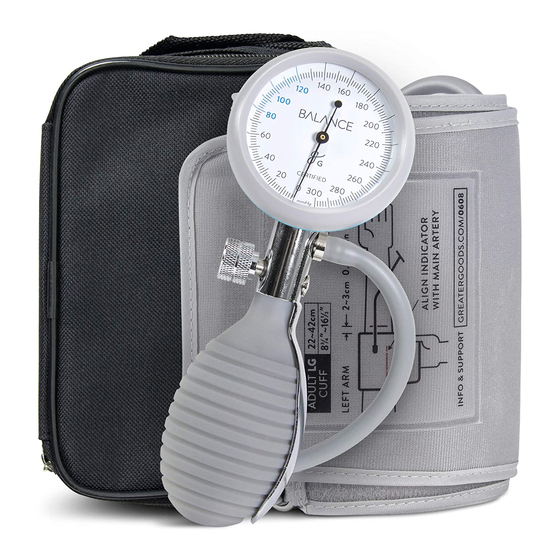Greater Goods 0608 Manuel - Page 7
Parcourez en ligne ou téléchargez le pdf Manuel pour {nom_de_la_catégorie} Greater Goods 0608. Greater Goods 0608 16 pages. Sphygmomanometer

Taking a Measurement (cont.)
5. Squeeze the bulb to inflate the cuff until the needle on
the dial is 30-40 mmHg above your normal blood pressure.
If you can still hear the sound of your blood flow through
the stethoscope, pump up the cuff to 200 mmHg.
6. Slightly turn the valve counter-clockwise to slowly deflate
the cuff. Aim for a deflation rate of 2-3 mmHg per second.
Deflation over a 3 second span
NOTE:
We've colored a portion
of the dial to mark the
healthy range, so you
can quickly interpret
your results.
7. While the cuff is deflating, carefully listen with your
stethoscope. When you hear the first "thump" of blood
flow resuming, write down the number indicated on the
dial as your systolic number. These sounds will become
more muted as the cuff pressure drops—when you hear
the last "thump", mark down the number on the dial as
the diastolic pressure. The needle on the dial will "jump"
whenever you hear blood flow.
6
